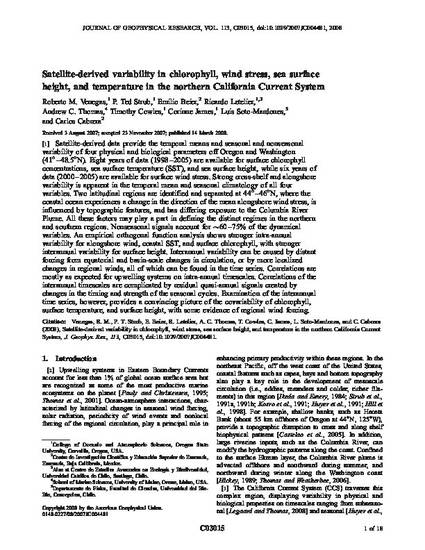
Satellite-derived data provide the temporal means and seasonal and nonseasonal variability of four physical and biological parameters off Oregon and Washington ( 41 degrees - 48.5 degrees N). Eight years of data ( 1998 - 2005) are available for surface chlorophyll concentrations, sea surface temperature ( SST), and sea surface height, while six years of data ( 2000 - 2005) are available for surface wind stress. Strong cross-shelf and alongshore variability is apparent in the temporal mean and seasonal climatology of all four variables. Two latitudinal regions are identified and separated at 44 degrees - 46 degrees N, where the coastal ocean experiences a change in the direction of the mean alongshore wind stress, is influenced by topographic features, and has differing exposure to the Columbia River Plume. All these factors may play a part in defining the distinct regimes in the northern and southern regions. Nonseasonal signals account for similar to 60 - 75% of the dynamical variables. An empirical orthogonal function analysis shows stronger intra-annual variability for alongshore wind, coastal SST, and surface chlorophyll, with stronger interannual variability for surface height. Interannual variability can be caused by distant forcing from equatorial and basin-scale changes in circulation, or by more localized changes in regional winds, all of which can be found in the time series. Correlations are mostly as expected for upwelling systems on intra-annual timescales. Correlations of the interannual timescales are complicated by residual quasi-annual signals created by changes in the timing and strength of the seasonal cycles. Examination of the interannual time series, however, provides a convincing picture of the covariability of chlorophyll, surface temperature, and surface height, with some evidence of regional wind forcing.
Available at: http://works.bepress.com/andrew_thomas/10/
